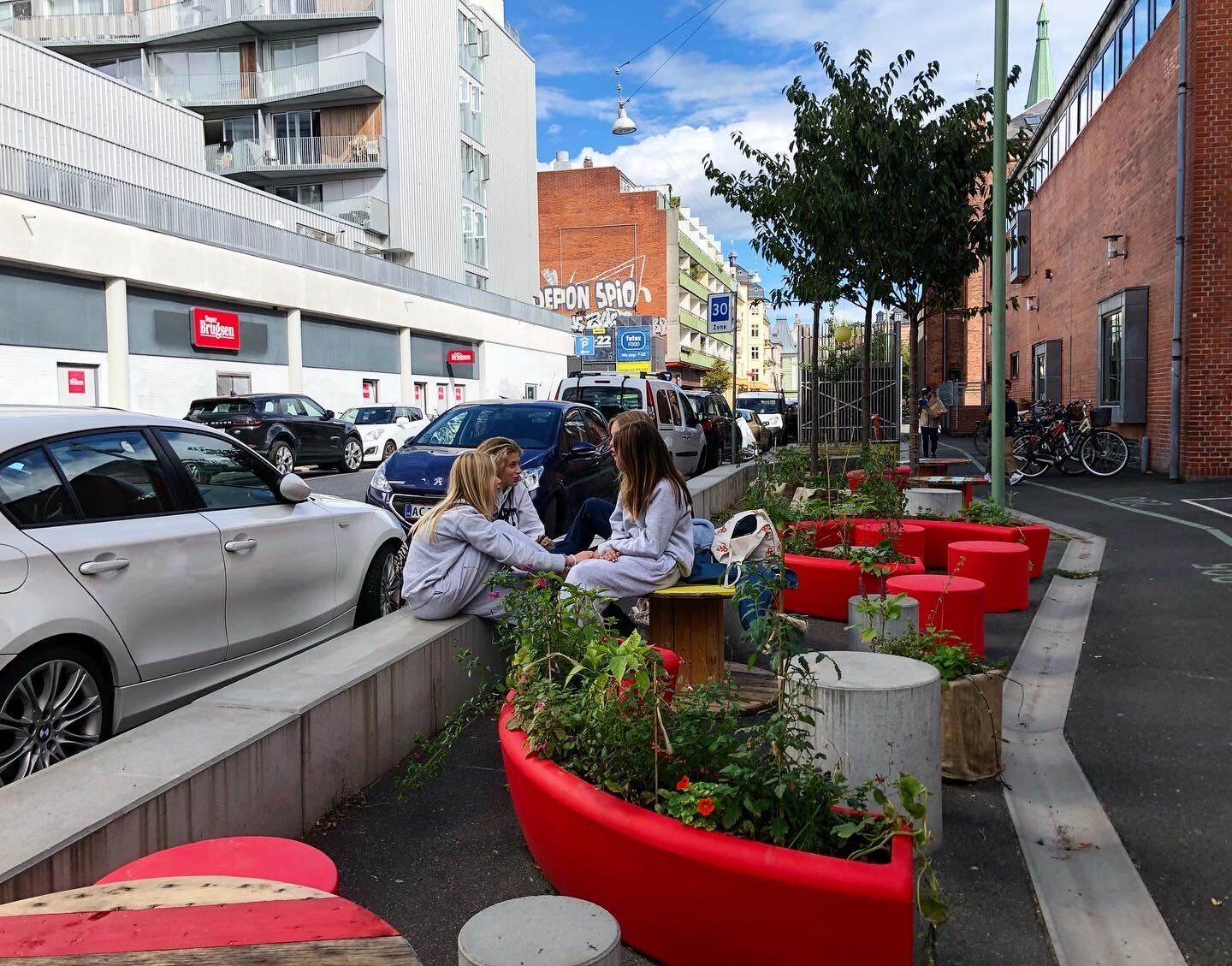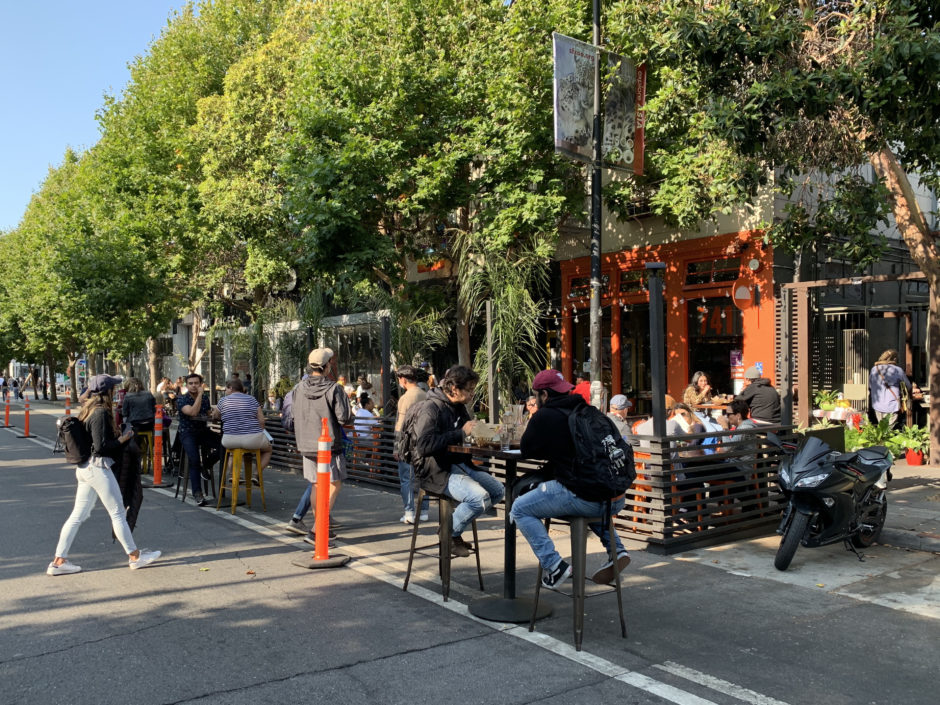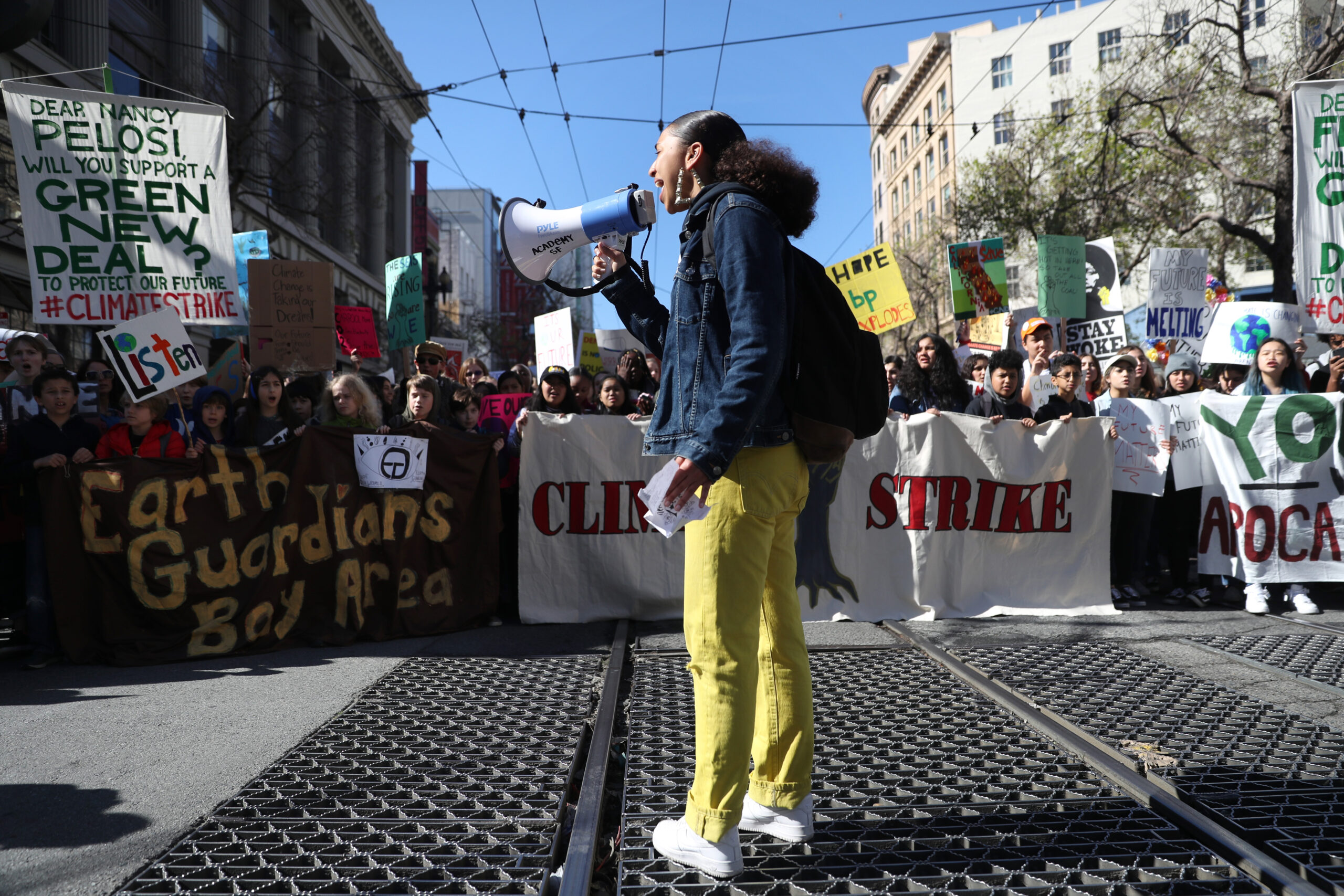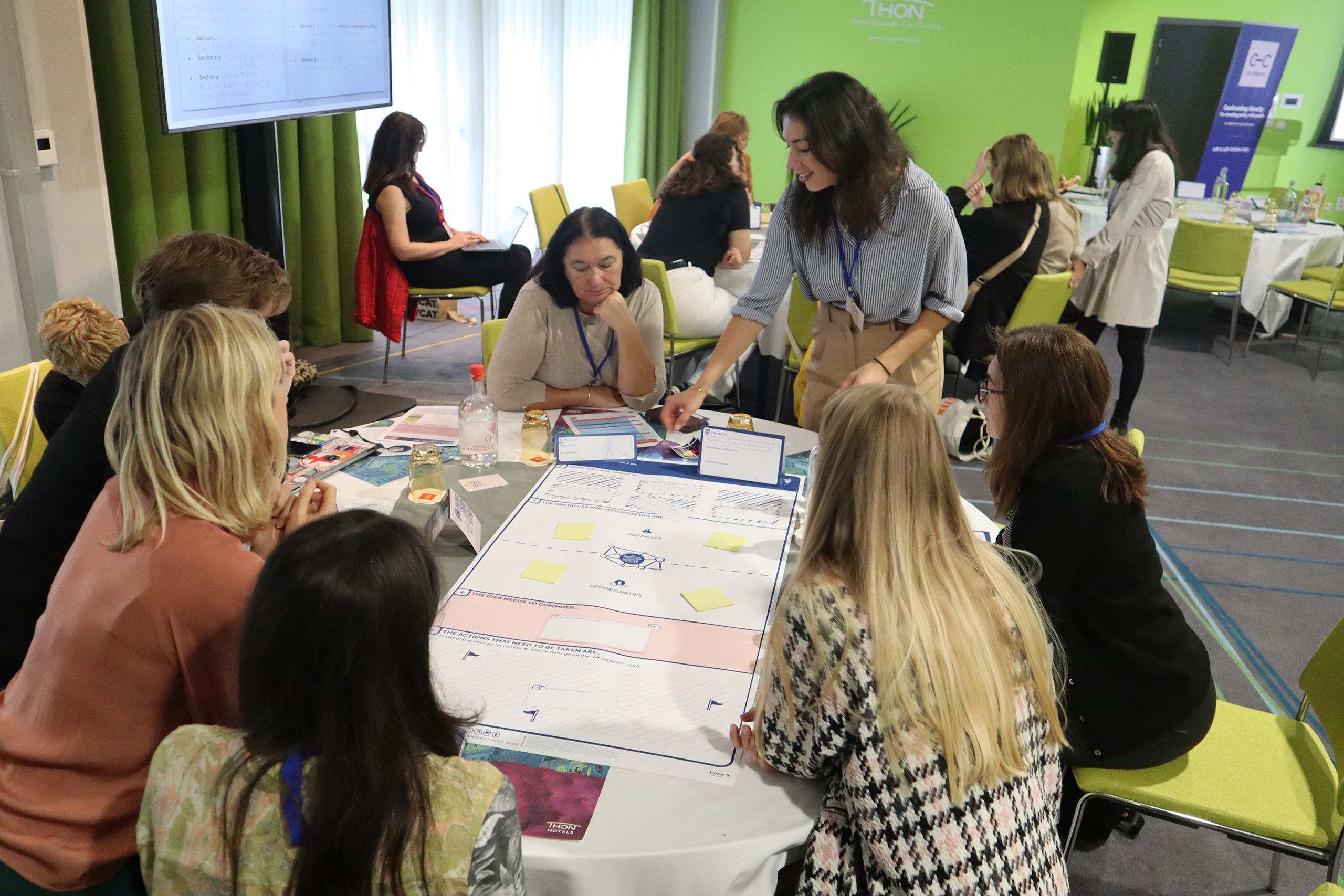This is the second article in a two-part series emphasizing the vital role of urban food systems during (and beyond) COVID-19. In our concluding piece, we discuss the impacts of the pandemic on urban food environments with research and design firm Gehl.

Since the start of COVID-19, the urban design and strategy firm Gehl have been studying how physical distancing measures are influencing public life and, in turn, changing people’s own perception of their food environment. Described as the physical, social, and economic conditions influencing people’s food choices and nutritional status, food environments have been critical in ensuring people’s access to healthy food and respite during COVID-19. A global online survey and a series of Public Space Public Life Surveys (PSPL) conducted in cities across the United States and Denmark have provided Gehl with an understanding of challenges experienced in communities during the pandemic as well as initial insights into how food environments could be managed in our “new normal.”
A partner in EAT’s Shifting Urban Diets project, Gehl pioneers the concept of “foodscapes”—the space where public space, public life, and food places meet. Through the three-year project, supported by EIT Climate-KIC, Gehl works to understand food-related behavior in two Copenhagen neighborhoods and to design interventions that promote healthy and sustainable eating options, focused on youth. “Through taking a close look at local food environments in Copenhagen, we have learned that a number of factors influence people’s food choices—and if we want to shift diets towards healthier and more sustainable options, the physical surroundings need to make these options appealing and convenient,” says Emily Norford, Policy Manager, Urban Food Systems at EAT.

Local residents visit the Shifting Urban Diets pilot and taste herbs from the edible garden in Nørrebro, Copenhagen © Gehl
Gehl’s COVID-19 research in the USA and Denmark unveiled that the physical quality of food environments presents challenges for people to run their essential errands safely. Fears of overcrowding in markets and grocery stores, as well as limited space in queues, have been reported as preventing people from conducting necessary errands. Likewise, the studies expose how the food system disproportionately serves citizens, especially those in vulnerable communities. In New York, the PSPL highlighted that areas with a higher proportion of Black and/or Latino residents have difficulties with accessing services, including outlets with good quality food.
With the lockdown, we’re observing food places picking up this role. Grocery stores, kiosks, and farmers markets are now the places where people can get their dose of neighborhood gossip, see other people, or convene.
In Copenhagen, San Francisco, and New York—cities where Gehl has a base—the studies show that food places are increasingly mimicking other urban functions. “Community hubs were once found in many settings—the gym, the dog park, the community center, or religious institutions,” says Sophia Schuff, Project Manager at Gehl. “With the lockdown, we’re observing food places picking up this role. Grocery stores, kiosks, and farmers markets are now the places where people can get their dose of neighborhood gossip, see other people, or convene.” Gehl have also observed a resurgence in local restaurants and cafés acting as a bridge to Community Supported Agriculture.

In major cities, streets are being retrofitted to provide adequate distancing to diners. © Gehl
Meanwhile, the PSPL in four Danish cities—Copenhagen, Helsingør, Horsens, and Svendborg—uncovered a number of successful, “health-safe” initiatives; for instance:
- Partnerships between food markets and cultural institutions to organize events around food;
- Online cooking classes for children, hosted by professional chefs;
- Digital platforms, like Too Good To Go, are joining forces with local shops and restaurants to prevent food waste; and
- Community lunches in closed-off streets, called “Grønne gade frokost” (Green street lunch, in English).
“To us, many of the temporary initiatives offer an opportunity for a more fundamental rethinking of urban space [in relation to food environments] over the long-term,” says Liselott Stenfeldt, Director at Gehl Innovation. “60 percent of the respondents said they have spent more time in their local neighborhood than in the city center, and even more emphasize that the crisis has made them value the offerings in their local area more than ever before.”
Ensuring a shift towards equitable urban food environments
“We’ve been observing some interesting discourse around best practices for public space distribution as a response to COVID-19,” tells Schuff, “and public space is a way to help provide people equal access to food.” Examples of emerging good practices include retrofitting restaurants into outdoor markets; establishing networks of community fridges; and creating urban gardens in neighborhoods labelled as food deserts to enable people to access healthy food. More recently, restaurants are increasingly permitted sidewalk or road space to provide adequate distancing for diners. “It is a wonderful way to showcase how cities can appropriate less strategically allocated car space for people very quickly and easily,” says Schuff.
Yet, Schuff warns that some reopening actions can lead to less equitable and safe streets. “While outdoor dining is good for business, we know that it takes more than one type of public space activation to invite people of all ages and abilities to a public space,” notes Schuff. “Investing in businesses… needs to go hand in hand with long-term thinking both to ensure that businesses continue to thrive post-COVID and that equal access [to food] for all is catered for.” The key, says Schuff, will be to safeguard that not all reclaimed space goes to paying customers, but also to users who are not paying to stay, especially vulnerable citizens such as traditionally underserved communities and youth.
It is clear that food is not experienced by everyone in our cities equally. While food is the great socializer, it is also a necessary service.
As a response, Gehl will continue to work on developing “foodscapes” from an equity lens. “It is clear that food is not experienced by everyone in our cities equally,” says Schuff. “While food is the great socializer, it is also a necessary service. We are interested in creating the right conditions for people to not only access the food they need but to invite them to use their neighborhood actively.”
Opportunities for a “fresh” approach to re-think urban food environments
The temporary initiatives and ideas being tested during COVID-19 offer opportunities for a fresh approach to re-think urban food environments in the future. According to Schuff, a people-centered, participatory process will be crucial to guarantee their success. “By encouraging more direct participation from citizens, people can help shape their local areas. A model for this is the Participatory budgeting pilot for Vancouver Downtown Westside, where people are invited to collaborate on city budgeting.”
These initiatives also open opportunities to bring new stakeholders to the table. “By integrating architects, planners, and designers into food security and provisioning planning, we can tackle more ways to improve food access through shared systems like housing, land use, environmental planning, and transportation,” tells Schuff. “The food system could also be linked more directly with monitoring health outcomes so we can be much smarter when strategically planning our cities, formulating policy, and developing infrastructure.”
Even if we make the perfect outdoor environment for eating or shifting habits and desires, if the food industry doesn’t meet us halfway, it won’t be possible to incorporate a Planetary Health Diet into people’s lives.
According to Schuff, involvement of the food industry will be key to integrate the food system into other sectors. “People desire healthy or sustainable foods, yet, it is often not available at the local supermarket or convenience store,” says Schuff. “Therefore, even if we make the perfect outdoor environment for eating or shifting habits and desires, if the food industry doesn’t meet us halfway, it won’t be possible to incorporate a Planetary Health Diet into people’s lives.”
As the world continues to live in semi-confinement, people’s relationship with food systems changes on a daily basis. Millions of people are now turning to supermarkets, online platforms, and food delivery services to source their food, while the most vulnerable increasingly depend on food aid. For city dwellers, in particular, shopping and preparing food have become some of the few points of contact with what people knew as normal life.
In Copenhagen, both EAT and Gehl will continue to demonstrate how different factors can shift people’s food choices through the work of Shifting Urban Diets. “We are expecting the results of these interventions to shed light on how alterations to physical space, supermarket offerings, and affordable menus each play a role in changing the food choices made by young people in these city neighborhoods,” says Norford. “Though the specifics of these interventions are tailored to reflect the local context, the approach and the learnings will have relevance for a variety of urban settings.”
This article has been co-authored with Gehl, a partner of Shifting Urban Diets—a collaborative initiative between EAT, Climate-KIC, and the City of Copenhagen. Together, we aim to improve diets for all communities living in cities.
Shifting Urban Diets has received funding from EIT Climate-KIC. For more information please visit the Climate-KIC website.
Remaining one step
ahead
of the curve.
Five Youth Leaders Who Will Change the World
To celebrate International Youth Day, we are spotlighting the leaders of tomorrow. From India to the US and New Zealand to South Africa, young people are rising to demand greater action on climate change, biodiversity loss, hunger, malnutrition, food waste, plastic pollution, and more.

Reflecting on five years of policy co-creation with youth: the CO-CREATE project
After five years, the CO-CREATE research project “Confronting Obesity: Co-creating policy with youth” has come to end. Reflections on the project’s achievements and sustained impact are shared.


